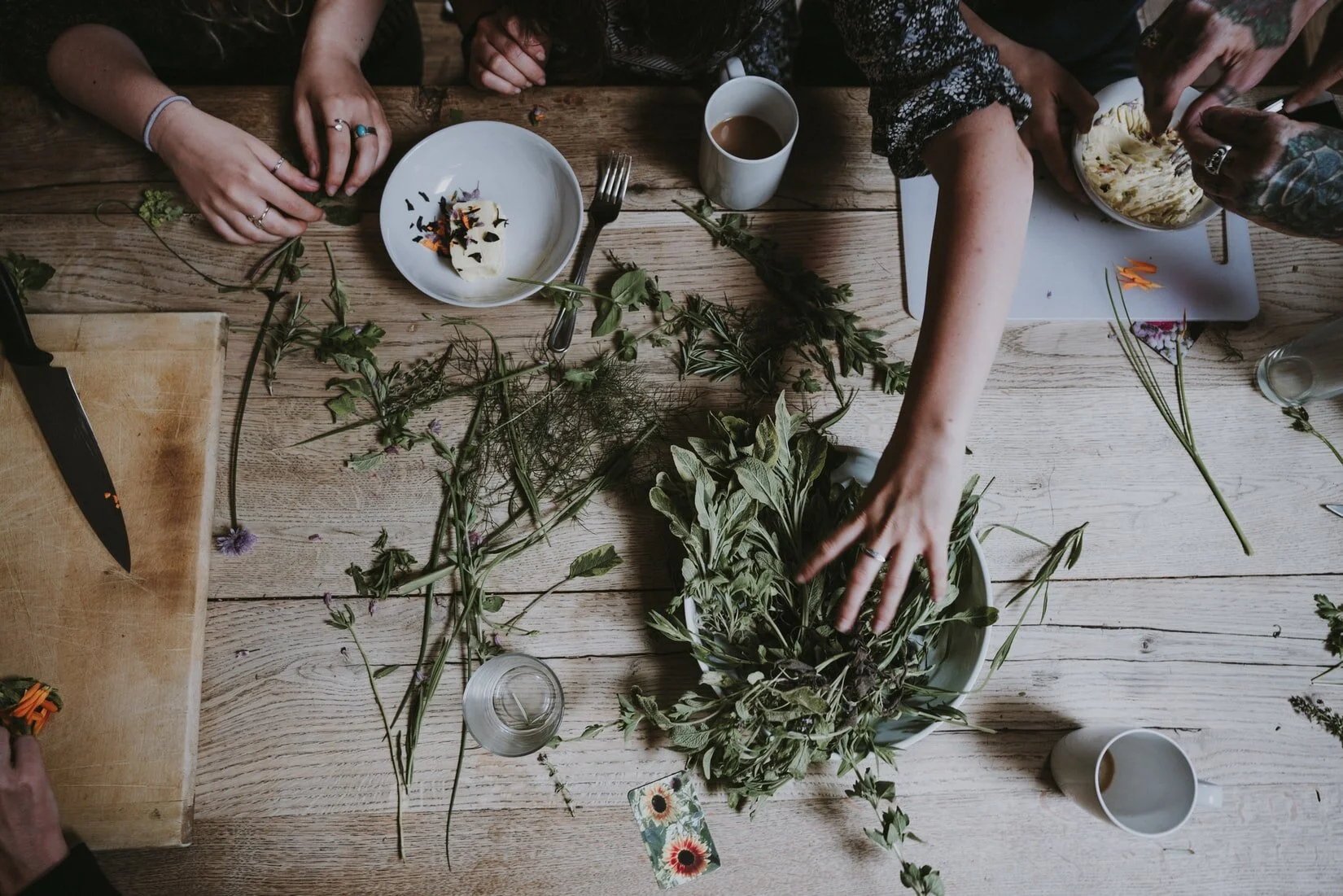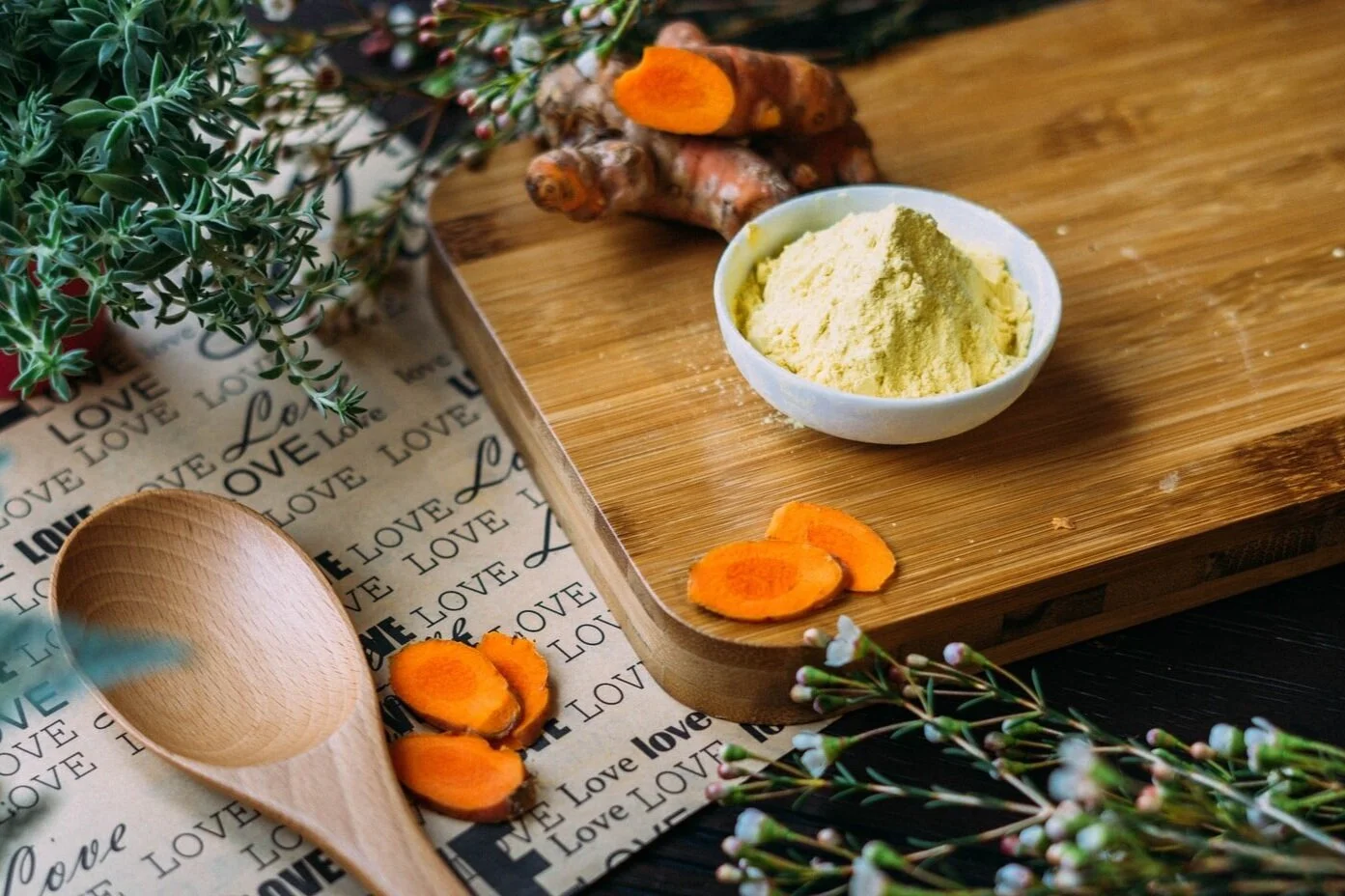Plant Medicine
Photo credit: Annie Spratt via Unsplash
Nature provides us with plants whose fruits nourish, and leaves heal. In fact, herbalism, which means using plants medicinally to support emotional, physical, and spiritual healing and well-being, is the oldest healing system on the planet.
Mastering the art of traditional medicine can empower us with health-offense, keeping us healthy by practicing self-affirming food choices and wellness practices every day. It can also act as a first-line of defense, offering natural ways to treat minor illness and imbalances. Consider it as the best friend of conventional medicine, keeping you out of the doctor’s office as long as possible. But that doesn’t mean it can solve everything. Severe symptoms should be addressed with a doctor. Natural medicine can replace many of the over-the-counter solutions, though, and once you get the hang of it, you’ll be surprised how far a fresh thyme tea, lavender milk-bath, or eucalyptus diffusion can act as antidotes to aches and pains, insomnia, or the onset of a cold.
“
…USING PLANTS MEDICINALLY TO SUPPORT EMOTIONAL, PHYSICAL, AND SPIRITUAL HEALING AND WELL-BEING, IS THE OLDEST HEALING SYSTEM ON THE PLANET.
”
Herbal medicine can also bring the emotional aspect back into the healing process, by acting on the senses. This sensory nature - impacting us through taste, smell, and even feel - can act as a powerful antidote to the emotional manifestations of imbalance, such as depression, anxiety, agitation, or fatigue.
For example, you can sip a rosemary tea to open up the respiratory system at the onset of a cold, add a drop of high-grade peppermint to your temples to help with a headache, or add some grapefruit drops to a diffuser or a mist if you need a midday pick-me-up.
Photo credit: Chelsea Shapou via Unsplash
Essential oils
One of the ways to maximize the therapeutic benefit of herbs is through the use of essential oils.
Essential oils are stored in the secretory glands, glandular hairs, veins, ducts, and cavities of plants, and are what give a plant its scent and unique chemical composition. These essences provide plants with the ability to protect themselves from disease, deflect predators, and attract certain pollinators. Extracted from the plant material, essential oils can offer some medicinal benefits to humans as well. They are highly potent, and should be used with care.
The therapeutic applications of essential oils are vast, as they inspire reactions in the body that invigorate, refresh, calm, cleanse, warm, boost immunity, relieve congestion, stimulate cognitive function, kill pathogenic microorganisms, reduce inflammation, increase circulation, act as a diuretic, relieve pain, and minimize scar tissue formation. They can be used punctually, to treat a specific ailment, such as to heal a wound or calm anxiety, or be built into a wellness or beauty routine. Essential oils can also be added to base cleaning products, replacing the toxic synthetic chemicals used by many commercial brands.
“
MOST OF ALL, ESSENTIAL OILS BRING PLEASURE BACK INTO THE ACT OF HEALING, AND MAINTAINING HEALTH.
”
Most of all, essential oils bring pleasure back into the act of healing, and maintaining health. Though not always so, nature often builds pleasure profiles around the things that are healthy for us, as a signal of safety. The sensory experience of the aroma signals to the brain that it should prepare itself to receive a healing agent.
Photo credit: Chinh Le Duc via Unsplash
Herbs and Spices as Medicine
We all know fresh or dried herbs can add flavor to our meals, however, we don’t always consider how adding spices such as ginseng, cinnamon, or turmeric to a dish can also have great impact on our overall health. For example, ginseng and cinnamon are believed to help manage blood sugar levels, making them part of a potent complimentary practice to treating type 2 diabetes. Turmeric is a highly revered anti-inflammatory, and may help to alleviate joint pains and symptoms of arthritis, as well as to heal some skin conditions.
Cooking with herbs will naturally transfer to us their medicinal benefits, but knowing how to use them deliberately to treat or stave off certain health conditions can be a very empowering preventative health gesture.
“
…KNOWING HOW TO USE [HERBS] DELIBERATELY TO TREAT OR STAVE OFF CERTAIN HEALTH CONDITIONS CAN BE A VERY EMPOWERING PREVENTATIVE HEALTH GESTURE.
”
Burning herbs
The practice of burning herbs is shared across many cultures, and is generally used as a way of purifying the air and resetting, or redirecting, energy. Many herbs used for their smoke also have antimicrobial properties, which can help with some fungal skin infections.
In Chinese medicine, for example, the practice of Moxibustion employs mugwort on or near the surface of the skin, generally on the meridian systems of the body, either as a replacement of, or complement to, an acupuncture practice. The herb is rolled into cones and burned on the skin’s surface, or on top of an acupuncture needle. The warming effect that ensues, as well as the olfactive experience of the burning plant, can help treat pain, paralysis, or atrophy in soft tissue, bones, muscles, and joints, as well as contribute to preventing the onset of some systemic problems, such as cardiovascular health, respiratory issues, metabolic problems, and digestion.
Similar cultural practices include the burning of tulsi, in Asia, and sage, in Native American cultures. All have deep ritualistic history that blends the spiritual, medicinal, and sensorial, but share common attributes as purifiers and circulating energies.
Photo credit: Karly Jones via Unsplash
In sum, we know that plants as food sustain life, but learning about their specific medicinal value and potential across applications - from the food we eat, including teas, tinctures, and medicinal preparations, to using plant extracts and essences in topical applications, and in body products, to the cleansing properties of burning herbs, can help us stave off some important chronic diseases and live a healthier life overall, as herbs can help stimulate the nervous system, the cardio-vascular system, and the immune system, improving brain function, healing colds, impacting mood, and more.
Nature offers us a healing toolbox of plants, herbs and spices. So turn your kitchen into a home apothecary! Your body, and mind, will thank you.
Sources and additional reading:
Bennett, Robin Rose. The Gift of Healing Herbs: Plant Medicines and Home Remedies for a Vibrantly Healthy Life. North Atlantic Books, 2014.
Chen, Wei, et al. “Review of Ginseng Anti-Diabetic Studies.” vol. 24, no. 24, 2019, p. 4501. MDPI, www.mdpi.com/1420-3049/24/24/4501/htm.
Mang, B., et al. “Effects of a cinnamon extract on plasma glucose, HbA, and serum lipids in diabetes mellitus type 2.” PubMed.gov, vol. 36, no. 5, 2006, pp. 340-4. NIH National Library of Medicine, https://pubmed.ncbi.nlm.nih.gov/16634838/.
Shmerling, MD, Robert H. “Curcumin for arthritis: Does it really work?” Harvard Health Publishing, Harvard Medical School, 2019, https://www.health.harvard.edu/blog/curcumin-for-arthritis-does-it-really-work-2019111218290. Accessed 1 May 2021.





